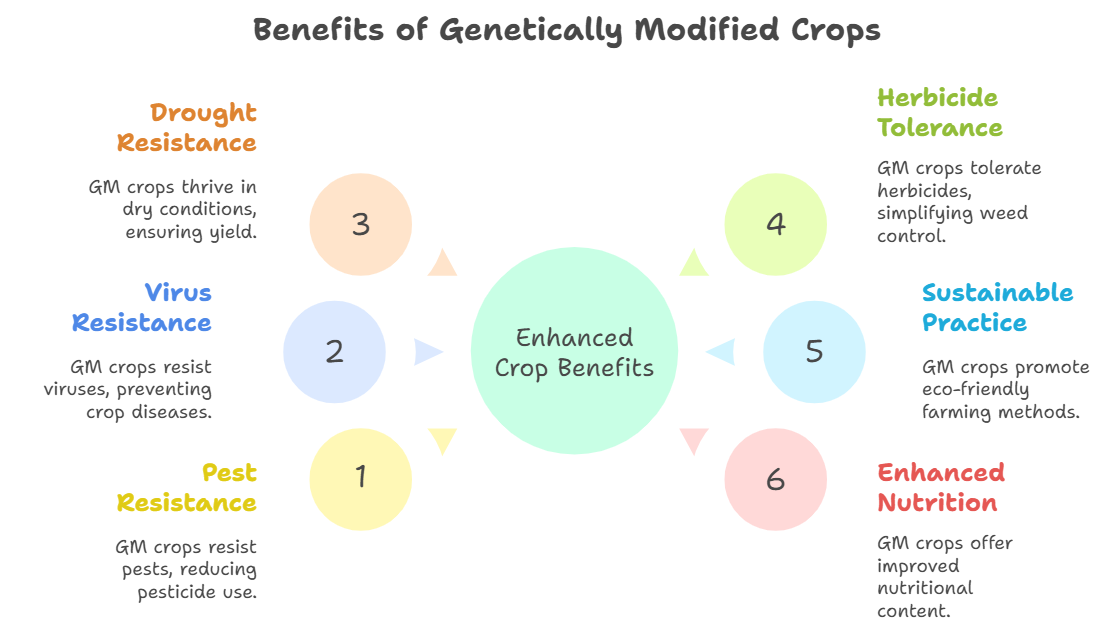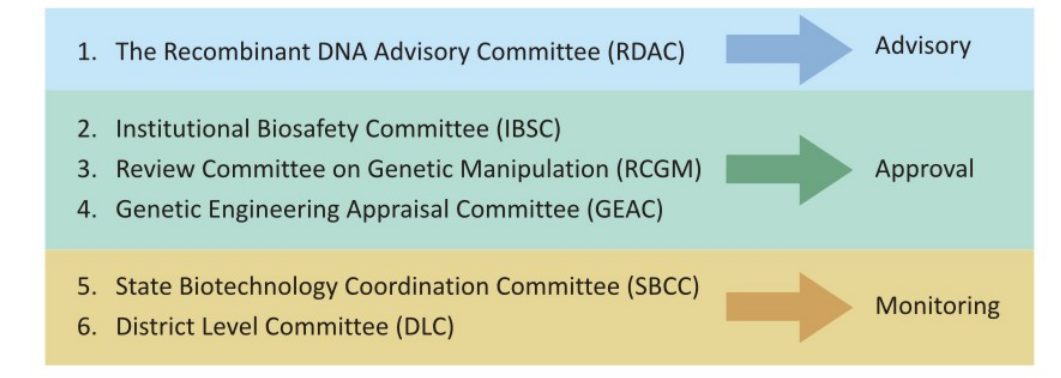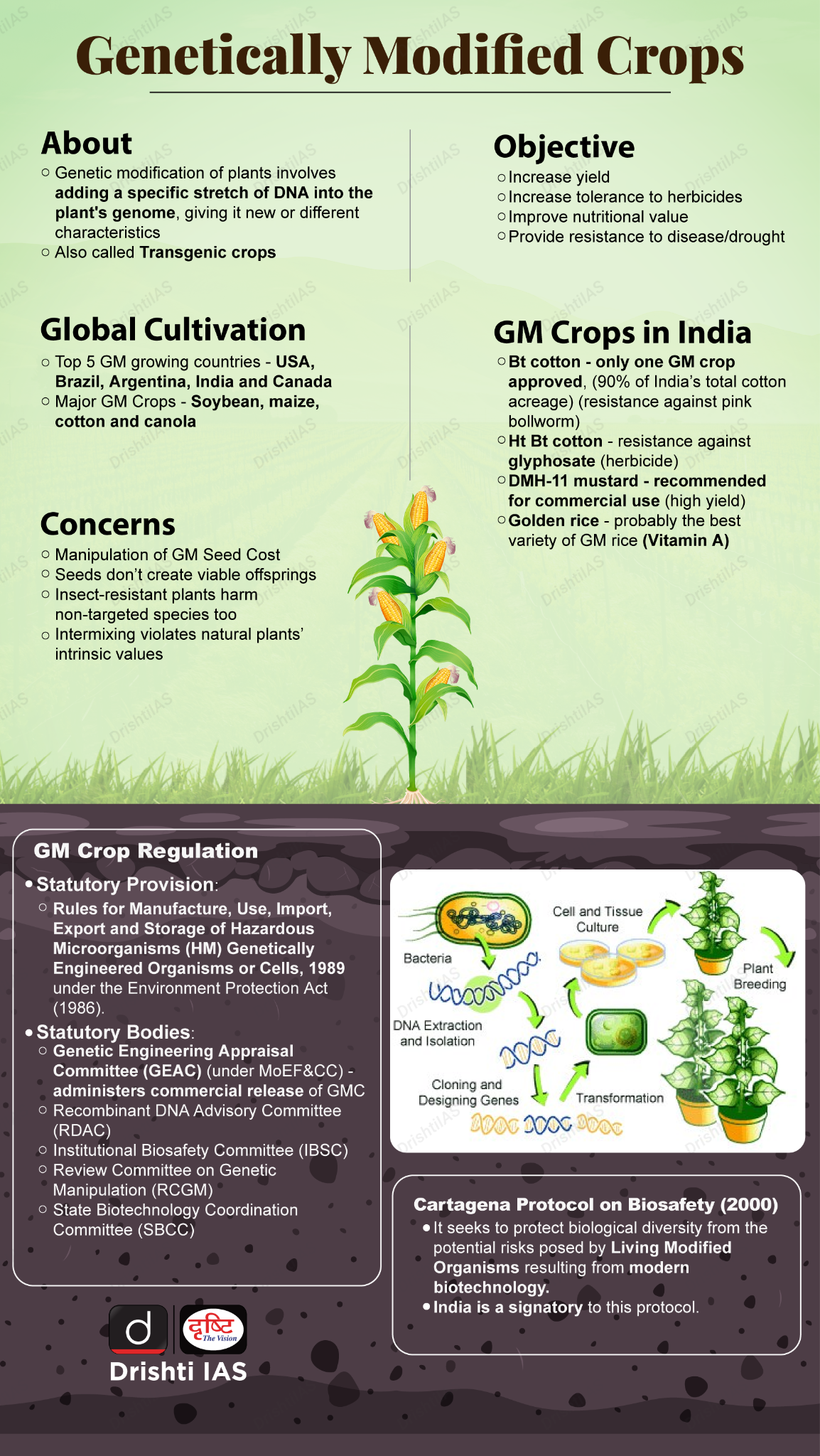14-Jul-2025
Genetically Modified (GM) Crops
Environment & Ecology
Why in News?
During ongoing trade negotiations, the US is pressuring India to open its agricultural market to genetically modified (GM) crops. However, India has strongly asserted that agriculture and dairy are non-negotiable red lines, cautioning that the import of GM crops could endanger farmers' livelihoods and compromise food safety.
About Genetically Modified (GM) Crops
- Definition: GM crops are plants whose DNA has been altered through genetic engineering to introduce or modify traits like pest resistance or delayed ripening.
- How It Works: Genes are either added or modified in the plant’s genetic material to achieve specific benefits.
- First GM Crop: Introduced in the USA in 1994 - the Flavr Savr tomato, engineered to slow down ripening and prevent rotting.
Advantages of GM Crops
GM Crops in India
- Approved Crop: Bt cotton is the only genetically modified crop approved for cultivation in India.
- Regulation: Controlled under the Rules, 1989, framed under the Environment (Protection) Act, 1986.
- Competent Authorities: Regulatory powers are assigned to specific authorities notified under the 1989 Rules to oversee manufacturing, use, import, export and storage of GM organisms.
|
Genetic Engineering Appraisal Committee (GEAC)
|
Preparing Through MCQ
Q. Which of the following is the first genetically modified crop introduced in the USA?
(1) Bt cotton
(2) Golden Rice
(3) Flavr Savr tomato
(4) Hybrid maize
Answer: (3) Flavr Savr tomato



